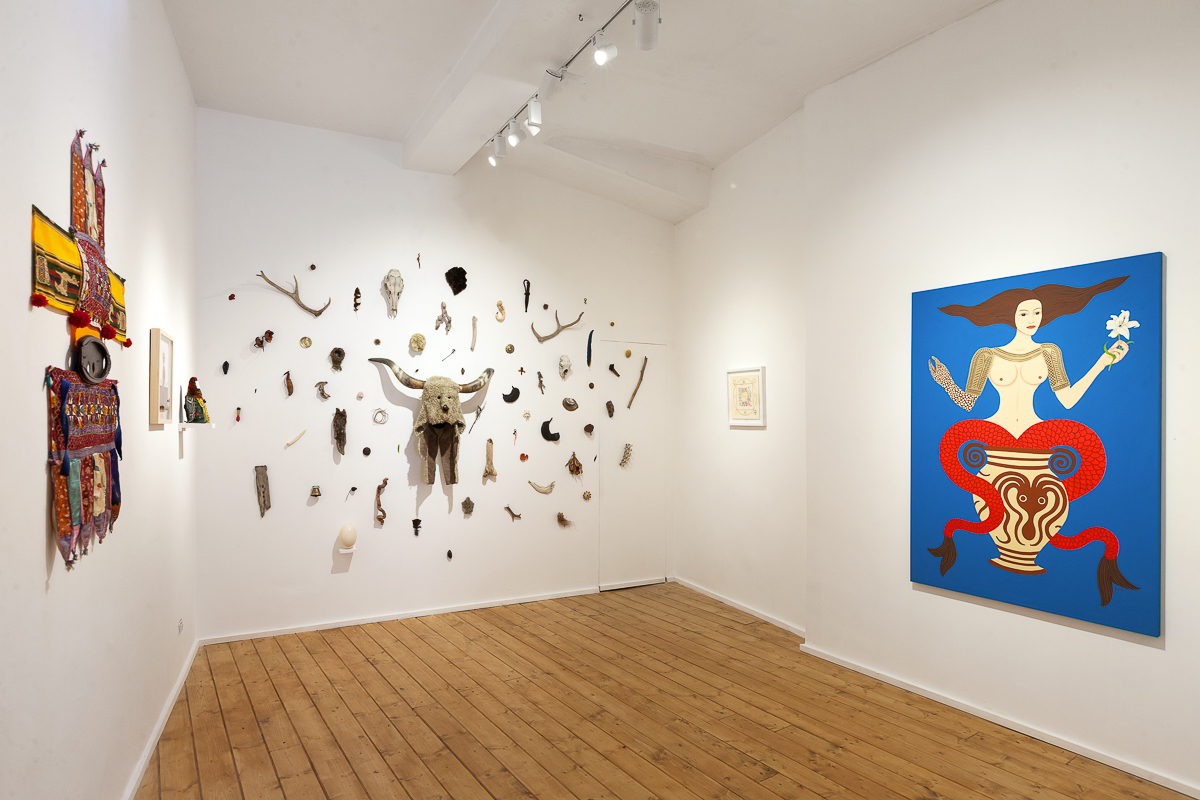DEM – ETERNAL LITTLE GODDESS
INTERVIEW BY GALLERIA VARSI
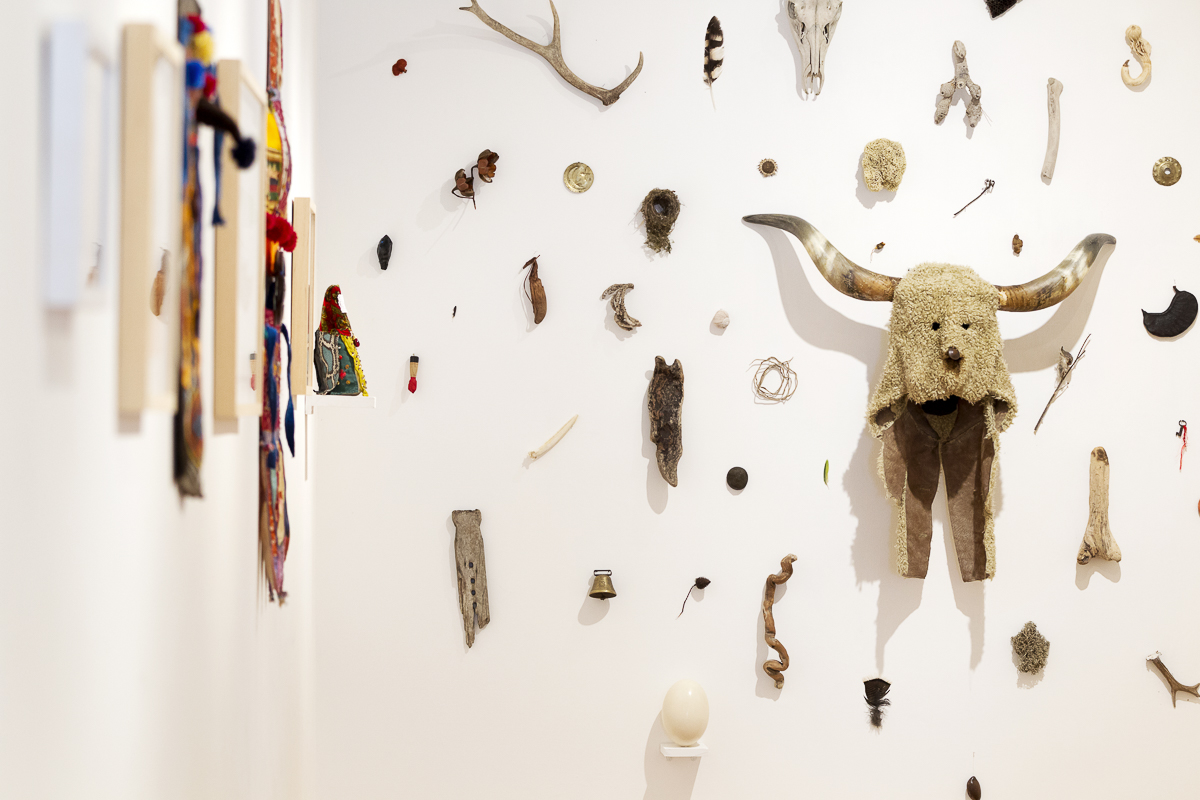
Graffiti have been an important part of your artistic path. For a long time, you have been a member of the OK crew, and you still collaborate with some of the artists. What can you tell us about this experience?
A: I started painting graffiti in the 90s and I was part of AKS, OK and ZOO. The only crew still active, even if less than 10 years ago, is OK. I did not go to any high school or art school; with graffiti I learned to combine colors and shapes and especially to paint on large surfaces. Thanks to them, I was able to tour Italy and Europe, meet many great people and have a thousand different experiences. In other words, if graffiti had not been part of my life, I would not be here to do this interview.

In Italy you were among the first to break away from letters, to bring a personal pictorial language to the walls, and to witness to the fast explosion and diffusion of the artistic phenomenon, at the center of an open and complex debate. What do you think about the current situation, and even more how do you define "the current phase"?
A: I would say “stagnant”. Maybe I’ve seen too many works over the years. Now apart from a few “old” names that continue a personal search, I find there are less new and interesting things. On the walls, you can find more illustrations or so-called abstract works than real art; so many people are just copying their own work and have stopped to study, and very few investigate places, people and architecture before intervening. Right now, I find the “train bombing” scene in Northern Italy more interesting. First because it still is illegal, second because it annoys common people. What is now on most walls is “the decorative taming of what was a form of free expression” and the definitive authorization by municipalities to do what they call urban redevelopment; these façade operations are, in my opinion, the final blow.

Alchemy and magic, the occult and spirituality, your artistic (and anthropological) research seems to derive from a strong need to understand the invisible forces which surround you, in an intimate dialogue with nature. Can you tell me how this need has found its vehicle in art?
A: First let me say that I am not an expert in the occult, or in magic and alchemy. Mine is a basic anthropological research on how mankind has interacted over the millennia with nature, how it has adapted to survive, even spiritually. Foremost is my link with Nature, its knowledge and its power, which always surprise me, and with all the things I have learned by observing it. By expressing myself through art, I have tried to communicate all these wonderful discoveries. What you call invisible forces for me are just the thousand ways with which the forces of Nature reveal themselves to us simple (and in the last centuries, stupid) human beings.
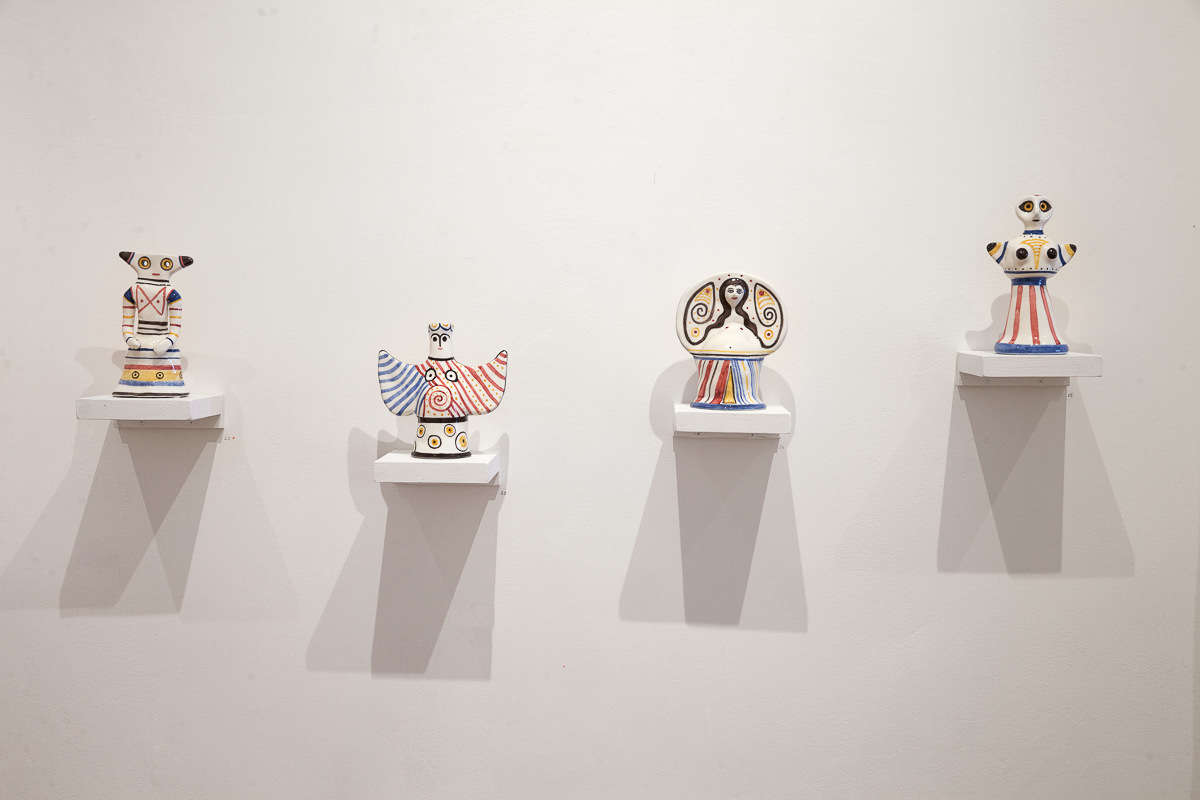
Your work is characterized by the multiplicity of techniques you use and the peculiarity of the chosen materials. I think of your installation "Micelio" (Pratizzano, RE), made in a forest with the caption: "Beech and fir wood, sheep skull, scallops (Pecten Jacobaeus), bones, deer mandibles, snails, wires". What is the common intention in your use of such different languages and materials?
A: I choose a language based on what seems most appropriate for what I want to express and, especially for the installations, it is the places themselves that direct me in selecting one material or the other. For me it is fundamental to collect objects that I randomly find and then to use them later. I always have a valid reason in doing things, starting from field research or various studies I do beforehand. To give you an example, for the installation “Mycelium” I found all the material on site, and therefore for me it already belonged to that place. This is true except for the scallop shells that I brought from home for two reasons: first because the installation is placed on the ancient road that connected the plain to the Ligurian Sea and I liked the idea that a marine element could help us remember it. Second, because it reminded me of a curious ritual, which I found on the prehistoric altar of Monte D’Accoddi in Sardinia, which implied bringing hundreds of shells from the sea into a hilly area. The reason why this was done is still unknown.
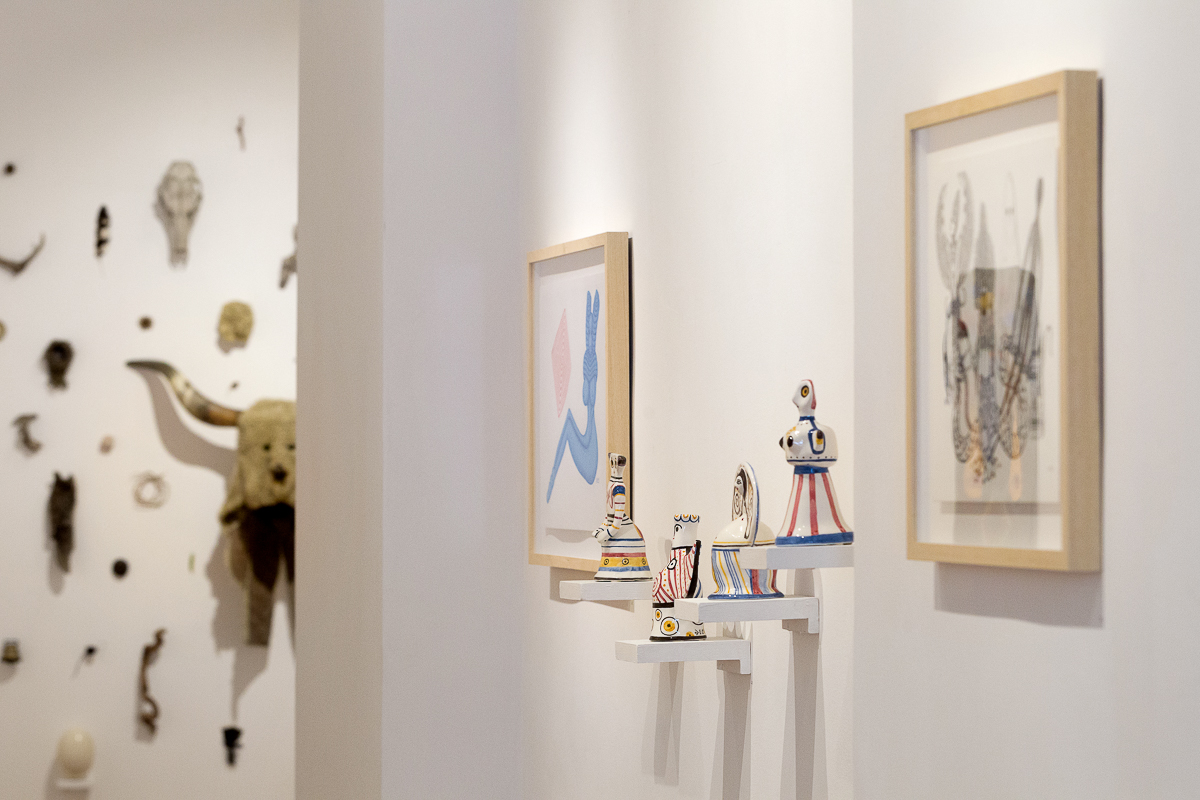
Among the various techniques that you master, some are linked to ancient traditions, such as embroidery, a technique dear to you and which you use to create masks. How did your predilection for embroidery come about? What do your masks mean in your art?
A: Honestly, I resumed embroidering only in the last three years. I did it more often when I was 15-16, it has always been something that relaxes me and becomes a kind of mantra. For me masks represent the various aspects of the forces of Nature, or the outward appearance-materialization of the most profound and archetypal part of man. I made them in carved wood, woven wool, feathers, lichens, fabric, beaten metal, papier-mâché; truly every type of natural and non-natural material.

You have now been working for several years with movies. In 2013 you made the film "Supra Natura", in collaboration with Seth Morley, and later the medium-length movies "Liber Pater" (2013) and "Panta Rei" (2014), all characterized by a strong theatrical component. How were your audiovisual projects born and developed?
A: Years ago, I made my first wooden mask starting from the base of a willow trunk. Not worn and separated from the body, it remained a simple piece of wood; after a few years I understood that films were the best way to make it come alive. This is why my movies derive from the need to bring the masks alive and to set them in the places where I have found the materials, but also to narrate the last uncontaminated areas of nature around me. The other two movies were born from reading books and searching for ancient beliefs or rites still valuable in the contemporary world. They all derive from discussions with Claudio (Seth Morley); we both contributed ideas and then we found a solution on how to best render these “visions”. My films are born from a canvas of initial ideas but then they are developed through direct staging, leaving space for improvisation. Fundamental, on a musical / sound level, is the combination of the sounds of nature and the music made by different friends, especially Larva108, but also Comaneci, Aquarius Omega and Graziella Kriminal, both with existing pieces and with compositions ad hoc.
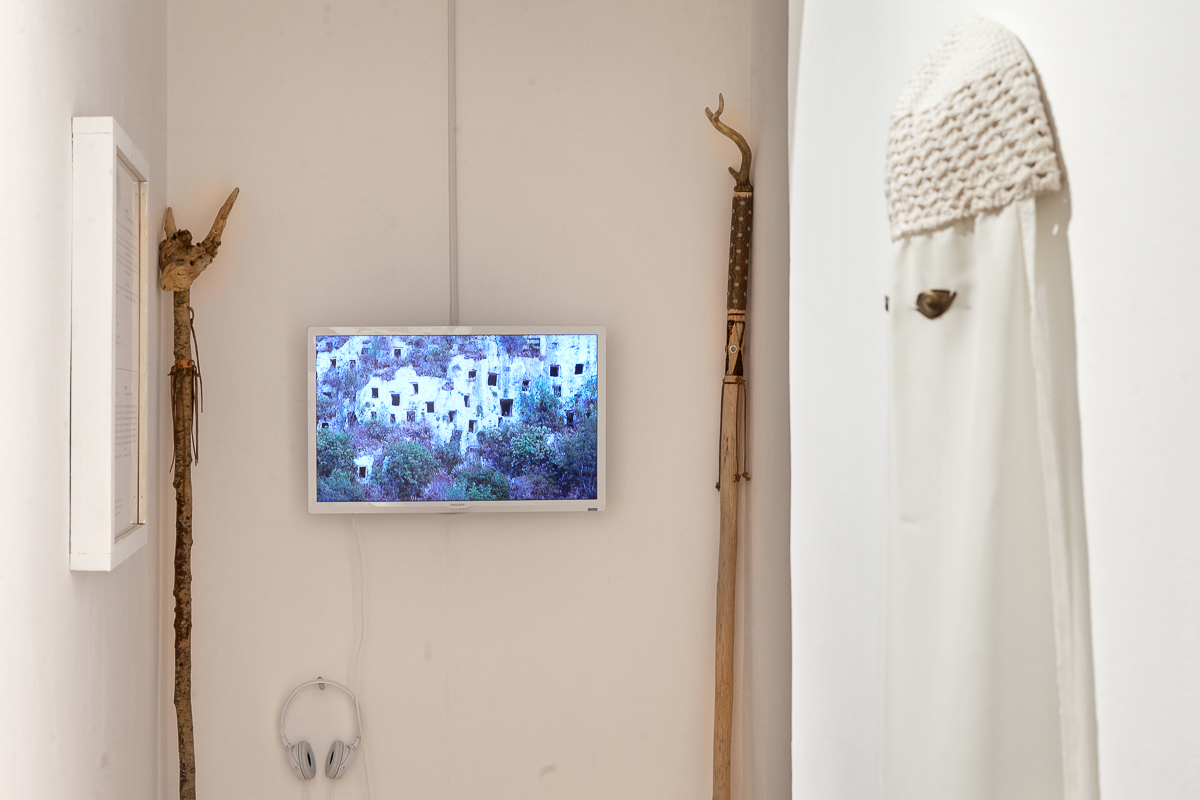
Your personal exhibition at Galleria Varsi, "Little Eternal Goddess", investigates the cult of the Magna Mater and the various "forms" it has taken over the course of history. What does this deity represent for you? How did you artistically approach the Goddess?
A: For me she is the Mother of every living form on Earth; she symbolizes love, strength, fertility but also death; she is a multi-faceted Goddess. Everything starts from the relationship with Nature, understanding that despite our society is moving us away from Nature, we always remain part of it. It also represents a rediscovery of all those natural places and symbols that are considered sacred and linked to female deities who have dominated our spirituality for thousands of years. My approach is based on the study of various texts, most of them published by Venexia, and in reworking images through what I read and that fascinated me.
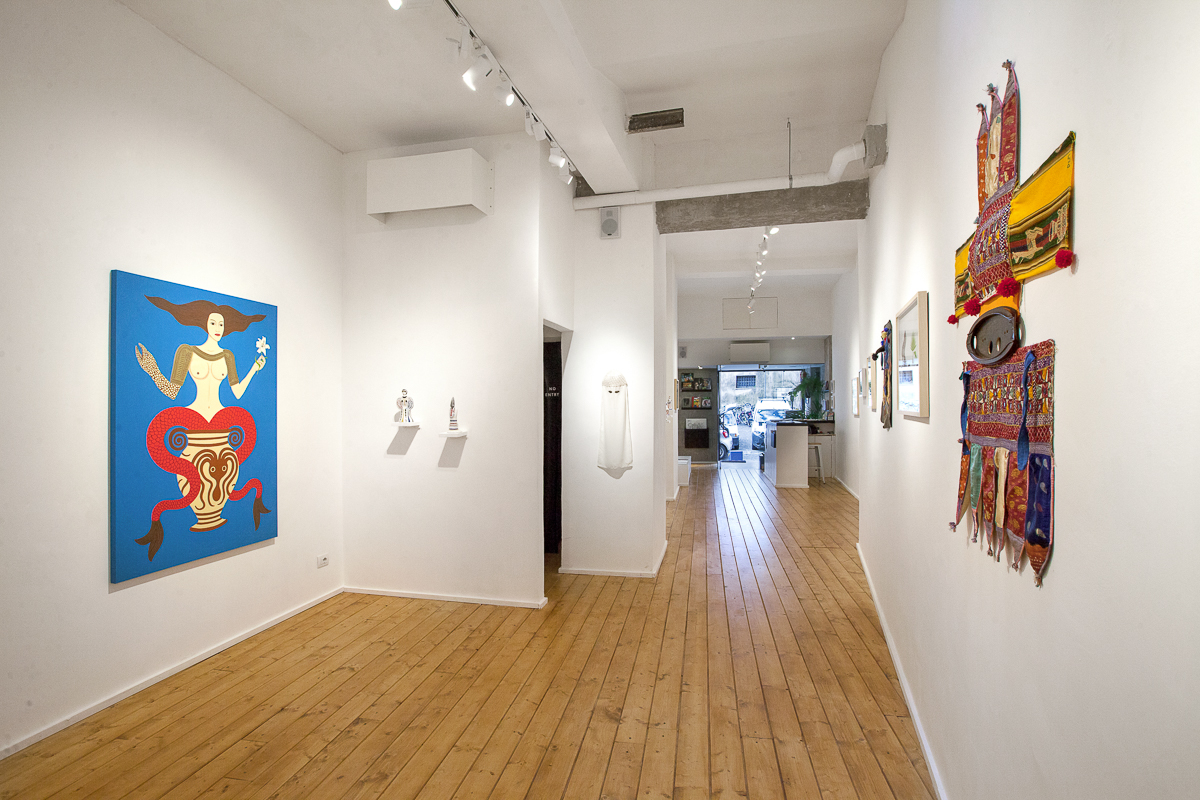
During the preparation of the exhibition you have often repeated: "Whoever enters the gallery will have to try and leave behind their own reality and try to get in touch with what they find, probably far from their common experience". This seems to imply that your works require an "effort" from their viewers. Can you explain what kind of relationship your work establishes with spectators and what you expect from this relationship? What is the meaning of carrying sacred symbols to an art gallery?
A: Basically, this exhibition contains a series of symbolic elements and beliefs now forgotten by contemporary man or supplanted by Christianity. For this reason, we need an effort to better understand and use this symbolism. I would like people to let themselves go and ask questions about the origin of certain figures and why these archetypes are still so strong despite being ancient. I think, and I hope, that in a place of art, viewers feel free to observe without preconceptions, and maybe also try harder to understand and ask questions.

Magna Mater embodies powerful and ancient concepts. Are they still valid today and what aspects of her essence do you think it is precious and dutiful to preserve?
A: Let’s start from the most basic and simple one: that of returning to Nature remembering that we are part of it, that everything in the universe is connected, that we are not here to dominate it or keep it under control; we should respect every form of life and take care of it. We must also remember that our most recent traditions have overshadowed the feminine principle of the Earth by detaching us from its sacred values and that this causes an imbalance between masculine and feminine also within our society. We must regain awareness, rediscovering the sacred value of Nature.
